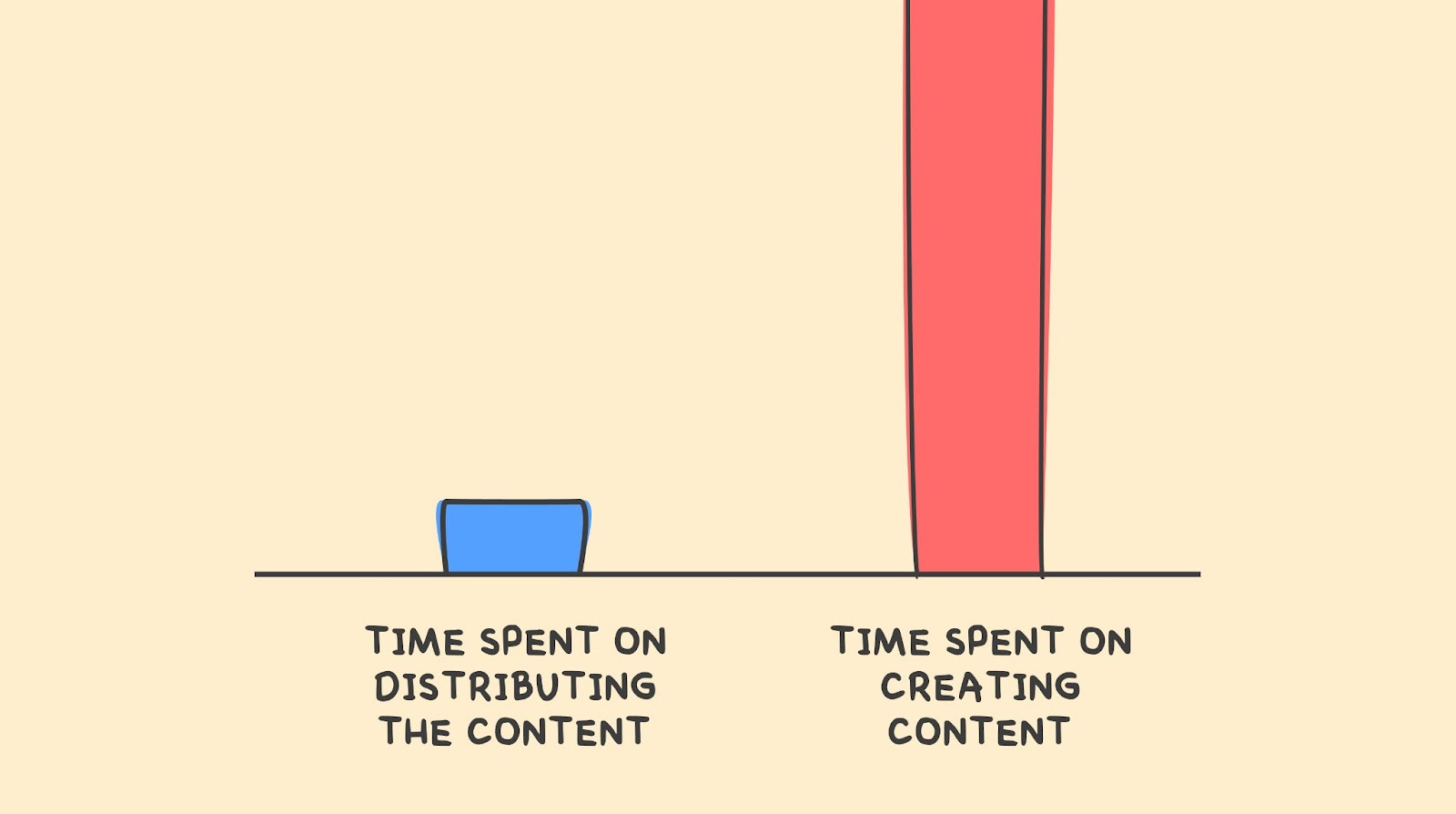The 3-tier content distribution framework
Marketing Power-Up #10: Think about content distribution BEFORE creating content.
“If you built it, they will come!”
It’s a common mistake first-time startup founders make—building a product without thinking about distribution.
Ironically, it’s also a common mistake for marketers, including myself.
We spend days (if not weeks) creating the perfect content piece.
So when we finally publish it, we take a few minutes to share it on Twitter, post it on LinkedIn, and include it in the newsletter.
Then we wait for people to consume it. Spoiler alert: they won't!

As marketers, we should think about distribution before we start creating content.
It’s what experienced product teams do. In partnership with the product marketing (PMM) team, they create a plan to distribute the product to the right audience with the right message that will resonate with them. This should happen before the engineering team writes a single line of code.
Marketers can learn about content distribution by studying the best product launches.
(As a shameless plug, our Appcues team created a free course Product Launches 101. It’ll give you foundational knowledge about product launches.)
One concept that product and PMM teams use to help prioritize launches is a tiered launch framework.
🛠️ Product launch tiers
Most companies launch products and features frequently, but only some launches are equal. That’s why it’s important to agree early on the launch level, especially among the key stakeholders.
It’s why product teams usually have a launch tier framework that helps prioritize and categorize launches.
Here’s the 3-tier product launch framework we use at Appcues:
Tier 1: Scream 😱
A major product launch that will acquire new customers, open new markets, and/or adjust the company's GTM strategy.
Tier 2: Shout 😯
A product or feature launch that will improve retention and/or unlock new revenue potential.
Tier 3: Cheer 👏
A feature launch that levels the playing field and improves retention.
With this system, you’ll rank each launch between Tier 1 (make a big splash) and Tier 3 (release it quietly).
This framework allows you to strategize how you take products to market. You can’t “shout” about each product and feature (or give each the same level of promotion), otherwise, your customers will just stop listening.
You can also create repeatable playbooks with launch activities for the different tiers. It saves you time in the long run.
🏆 Content distribution tiers
Similarly, you can adopt a tiered approach to content distribution.
, former Head of Marketing at Asana and co-founder of MKT1, shared a 3-tier content distribution framework in the (I’m a big fan!)

The goal of having distribution tiers is to identify the channels for each tier and create playbooks to distribute content.
For example, creating big-bet and cornerstone content pieces requires more time, effort, and investment. Thus, it’s appropriate that you’d want to “scream” those types of content as a tier-1 content launch.
Here are some of the distribution activities you could do for tier-1 content:
- Create assets for the customer success team to share the content with customers.
- Build a sales enablement plan to include the content in prospect outreach.
- Sponsor relevant newsletters and run paid ads for the content.
- Send a dedicated email to newsletter subscribers.
- Repurpose the content to other types of content (videos, Twitter treads, social cards, Instagram images, etc.)
Obviously, these launch activities need to be tailored to your business, customer, and market, which you can find out through customer research.
On the other hand, you might have content built specifically for a channel like SEO. A ‘Cheer’ or tier-3 content launch might be appropriate. The distribution activity could just be requesting Google to recrawl your blog and including it in your company’s newsletter.
📖 Creating distribution playbooks for each tier
The greatest value to this is creating playbooks or launch templates for each tier, including pre-launch, launch, and post-content launch activities.
This approach helps you identify the tier for a piece of content before creating it. You no longer have to guess how to distribute that content. You just have to follow the distribution playbook for that content tier.
As channels evolve and you learn more about your customers, you’d want to update and tweak those playbooks.
That’s also helpful as your marketing team grows.
Let me know if this is helpful!
Love to hear your thoughts. Reply back or leave a comment on Substack.
⭐️ Mini power-ups
Fun-sized blurbs to help boost your marketing.
✨ 3 ways to win as a B2B company: Peep Laja, CEO of Wynter, shares three ways B2B companies can differentiate themselves and win against competitors. TL;DR you can win by out-innovating competitors, outspending them, or out-messaging them.
✨ How Monday.com Wrote 1,000 Articles in 12 Months: Brad Smith, the co-founder of Userp, breaks down how he helped Monday.com scale their content production to 125 new articles per month, resulting in 1.2M monthly organic visitors.
✨ Why a global recession will wreck your 2023 SEO plans: and discussed in the podcast five things marketing leaders need to do right now to prepare for a recession in 2023.
Have a powered-up day!
Ramli John
👋 Say hello on Twitter and LinkedIn
P.S. If you found this helpful, would you share the love by tapping on the heart below? And if you’re feeling generous, kindly forward this to colleagues or click the share button below.



